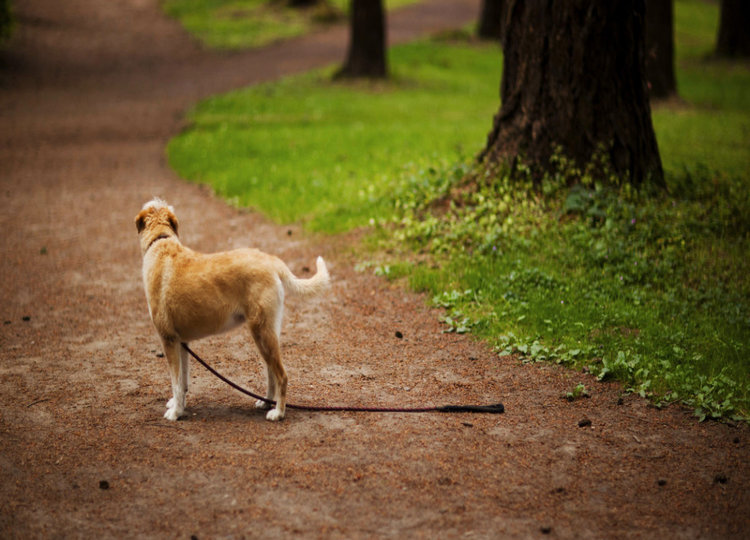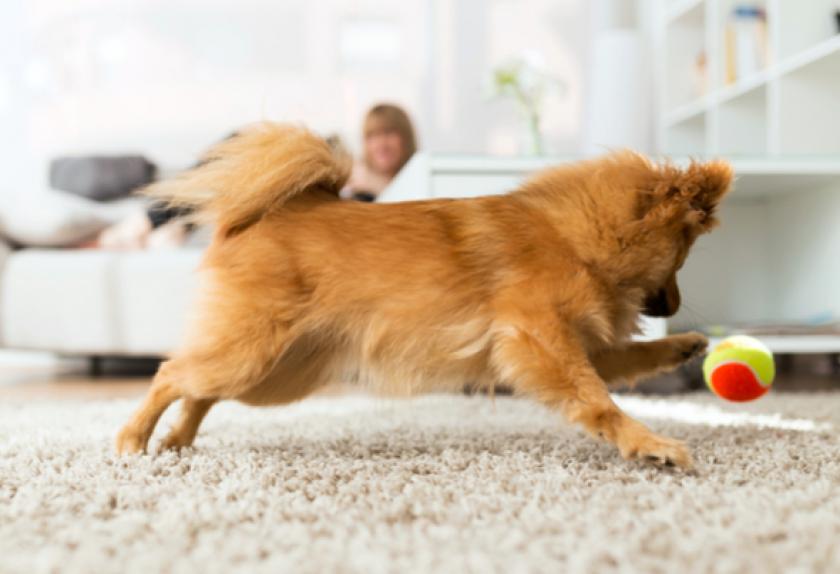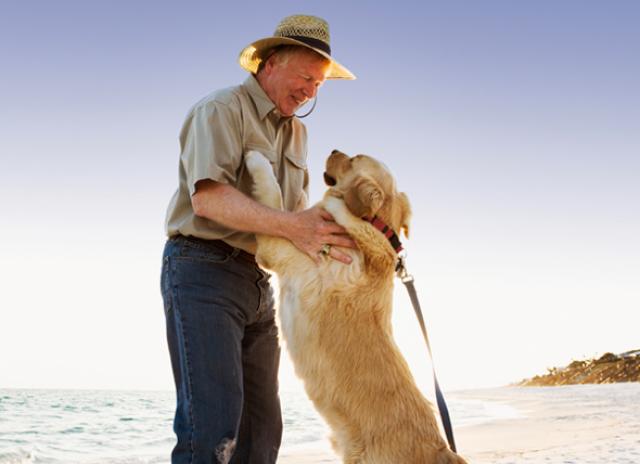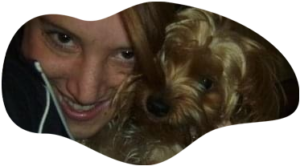Your dogs are happy to see you when you walk in the front door. Puppies will explode into an energetic fit of affection when you come home, when someone enters your house, or when they see a doggie friend. Most consider it cute to see their puppy run around, jumping on everyone, and skidding across the floor in excitement.
But, puppies grow up. Even small dogs can become a nuisance with constant jumping. It’s not difficult for a small or medium sized dog to trip you accidently, or to knock over children.
Bigger dogs are strong, and often heavy enough to knock over furniture, and people when they jump. This behavior needs to be stopped before it becomes overwhelming.
Why Do Dogs Jump On People?
Some behaviorists feel that dogs jump up onto people, trying to get close to our faces, because this is a genetic trait passed down to them by wolves. Wolf puppies greet adults by licking their faces, and mother wolves will often eat then regurgitate the food into the pup’s mouth.
Obviously, modern dogs do not eat this way, but the trait may have been passed down.
Other behaviorists feel that the behavior is simply the expression of excess energy. A way of greeting other dogs (playfully) and of greeting humans. Dogs licking their person’s face seems to go way back into the history of the human-canine bond. Humans ok’d the behavior, and dogs for generations have picked up on that and passed the process down.
Whatever the reason, excess jumping can lead to behavior problems and injury.
Wait Until They’re Calm
This is one of the easiest training methods to implement with dogs of all ages, and sets the tone for all other aspects of training, such as walking next to you on a leash.
Simply being patient and waiting until your pup calms down before showering them with attention is the best way to get them to stop jumping out of excitement.
This isn’t cruel. It can actually be good for your dog. Running around with reckless abandon can lead to injuries (slipping the wrong way on hardwood floors can lead to broken legs, torn ligaments, and muscle strains).
In older dogs, that kind of explosive excitement can cause heart problem (accelerated heartbeat).
How to Practice Patience
This will not be easy. You probably appreciate that your dog is so excited to see you. Waiting until they’re calm may take a few minutes, but you can help them avoid injury, and avoid injury to your guests.
Step 1: Walk in Calmly
One of the biggest mistakes we make is to play into the craziness. Using a high-pitched voice to greet your furbabies, speaking rapidly, jumping around with them, or rough-housing can all elevated their excitement.
Practice walking into your home calmly. If you have a bag, briefcase, or groceries, this is a good way to focus on walking forward, putting your things down, and giving your dogs a minute to let that energy dissipate before playing with them.
BOY HOLDING TREAT FOR WAITING DOG
Step 2: Say Hello, but Don’t Give Too Much Attention
It’s ok to say hi and acknowledge them, but do so with a calm, even voice then move on. Put your stuff away, wash your hands, then make eye contact. If you’ve taught them how to sit, this is a perfect time to give the command.
Once they’re sitting, you can give attention and affection.
- If Excitement Elevates, Back Off
Once they’re calm and you begin petting them, they may become overly-excited again. They may start jumping again. If so, back off, ignore them until they re-calm, then try again.
This may need to be repeated several times.
Do this every time you come home for several weeks. You’ll notice a difference after only a few days, but re-enforcement is key.
Tire Your Dog to Stop Jumping
- Take Short Trips
Time is a factor is this process. Being out of the house for 4 – 8 hours while at work gives your pup a lot of time to build nervous energy. To a dog, you’ve left an may never be coming home. Activity is great and trackable with Nuzzle.
Practicing short trips in and out of the house is a good way to reinforce calmness, and teach them that you will return.
Walk to the mail box, the end of the hall, down to your car, out to the store. Start with being outside your house for 5-minutes. Then 10, then a half hour, and so on.
It won’t take long for them to learn.
- Get Your Friends On-Board
Having friends, family, and other visitors follow the rules is paramount to success. Teach them to come in, calmly acknowledge your dogs, then wait until they’re calm. Remember, visitors provide your dog with such a great opportunity to cop some extra love and affection. This leads to even more excitement. But, if you have all visitors enter and follow the rules, your dogs will quickly learn that if they just wait, sit, and stop jumping, they’ll be showered in love and attention.
Most of my day is spent playing with dogs. When they nap, I’m here working on my blog. You’re welcome to reach out and connect with me.


















